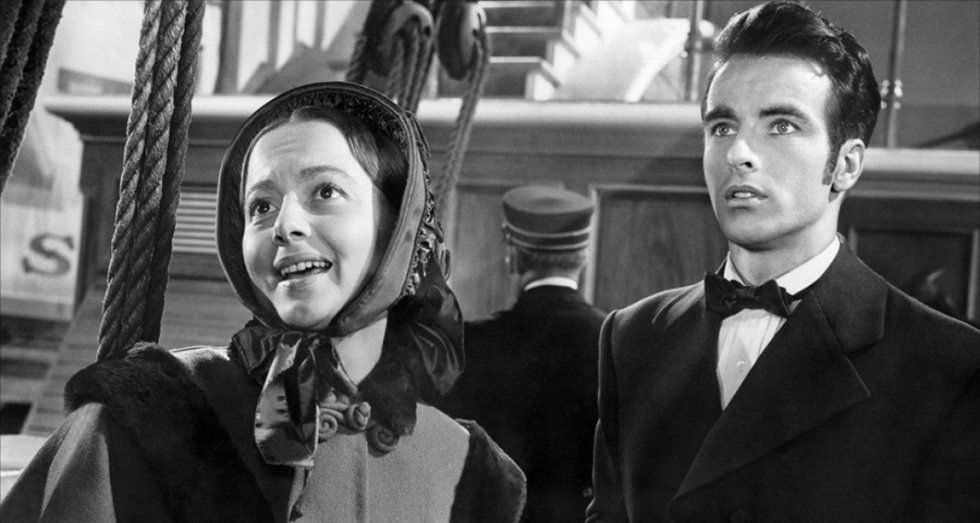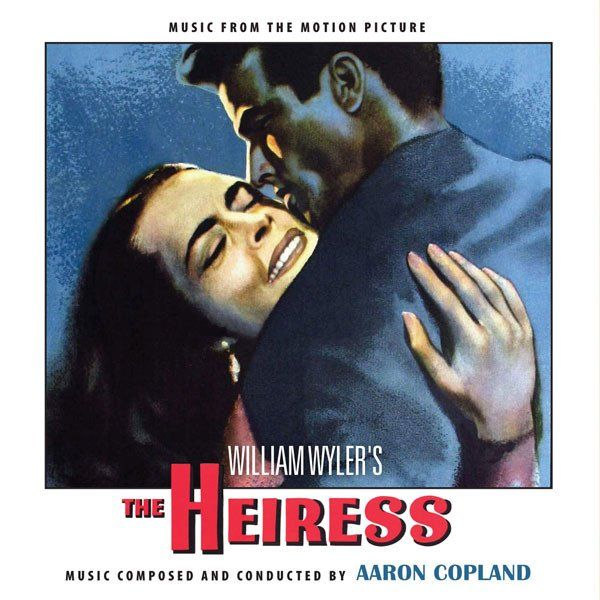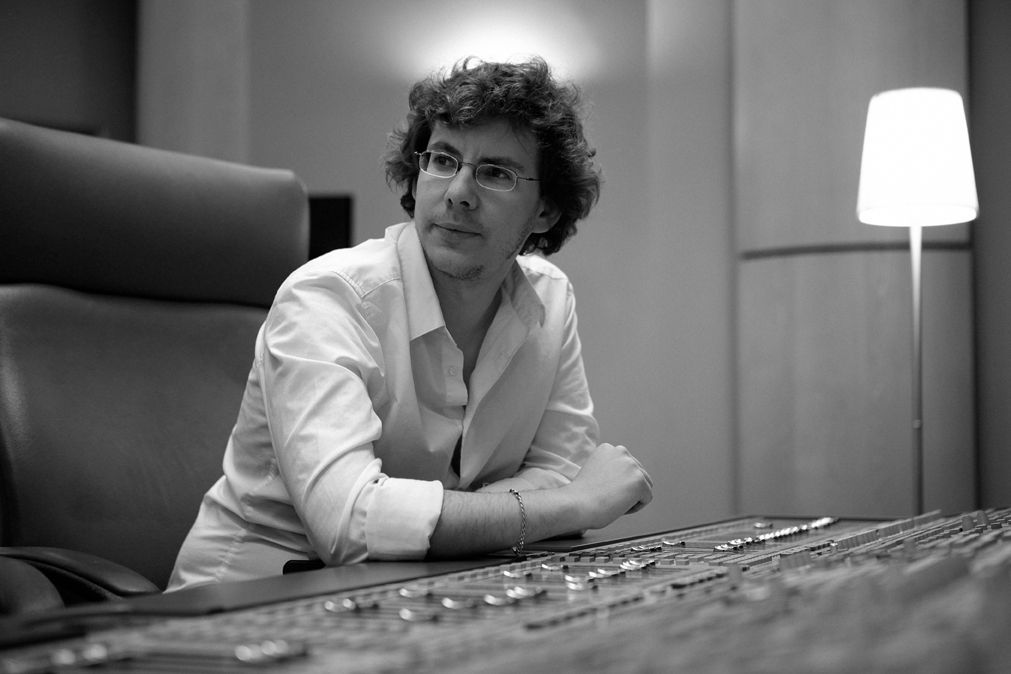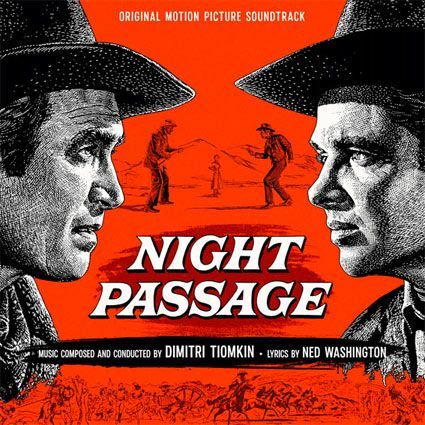The world premiere release in any format of Copland’s 1949 film soundtrack. The legendary film project directed by William Wyler, origins in a 1880 Henry James novel and 1947 play by Augustus and Ruth Goetz, and features an Academy Award-winning performance from Olivia de Havilland plus an early starring role for Montgomery Clift. An Oscar also went to Aaron Copland for his masterful score. It is interesting to note that Copland never adapted any of the music into a concert piece. It wasn’t until 1990, when Arnold Freed fashioned an 8-minute work for the Saint Louis Symphony Orchestra and conductor Leonard Slatkin that any of this music made its way to audiences. The first ever release of Copland’s actual soundtrack version, recorded at Paramount Pictures Scoring Stage, including both his “rejected” original main title and the subsequent film version, plus a wealth of additional music never before made available. Sadly, the condition of the master elements was very poor condition. In this case, even with careful restoration work done by veteran audio expert Chris Malone, the original 78rpm acetate discs exhibited significant surface noise from heavy wear. The sound quality is archival at best. The music, of course, is revelatory.
The Heiress

Film Music Notes: November - December 1949 Vol.IX / No.2 pp. 17-18
Copyright © 1951, by the National Film Music Council. All rights reserved.
Aaron Copland's score for the Paramount film, THE HEIRESS, is basically music of an intimate nature. Its overall effect is that of a kind of quiet restful picture of the late Victorian period in which the story is set. Instrumentation tends to be sparce. It is not music of an over-dramatic quality. In fact this element is underplayed causing the music to assume a subordinating role which it maintains throughout the picture. Copland has stressed the importance of small ensembles and a certain softness of texture that is extremely significant and quite pleasing to note, especially to the professional musician. The usual Hollywood sequences and over-blown mid-nineteenth century climaxes (as an attempt to underline the emotional aspects of the film) are happily avoided. The stamp of the composer is clearly recognizable as soon as his name appears on the screen, there being prior to this one minute's music footage not part of Copland's score. The latter appears at the very beginning of the main titles.
The opening scene and subsequent ones dealing with Washington Square in New York City, feature Copland at his very best. The music is quiet, tranquil, and extremely pastoral in nature. It is a musical mood in which the composer is completely at ease, as he has shown in other scores, namely OUR TOWN and THE RED PONY. There is a stairs sequence near the beginning of the film that is quite delightful. The music is spirited and gay, punctuated by short pizzicato passages in the strings. The number of instruments employed is small. The love scene depicted on the screen is accompanied by an extremely un-Hollywood type of emotional contour; music (mostly strings) that is restrained, sincere and intimate.
The song "Plaisir d'Amour" acts as kind of a romantic link between the two leading characters, appearing and re-appearing in different thematic extensions throughout the film. This device is not a new one but it is used here quite effectively for certain dramatic and emotional purposes. There is a particularly interesting section where Copland has the opportunity of mixing mood sequences as a direct result of the action on the screen. Switching from music of lightness and sparkle in the running up the stairs music to textures of dark somber qualities in depicting the intense personality of the father, is a valuable underlining of the movements expressed in the film.
Although the actual footage of the score is probably considerable, it does not appear so from outside observation. The music is not demonstrative in any way and lacks upon occasion definite dramatic emphasis. In several places I believe the music could have had more dramatic intensity. The scene at the end is a case in point. Here is the very crux of the dramatic action on the screen, and although the music builds up to a climax, one feels that on the whole it is disappointing, and falls short of what might have been expected and what should have taken place. At this time, I wanted the full impact of the situation, and I felt the need for music more striking in its force and directness. There were several other instances where dramatic possibilities were not fully explored.
The utilization of woodwinds and subdued strings is highly successful throughout the score. The orchestral tutti is almost completely absent- an interesting feature to note. The woodwinds are foremost in one passage where they play clever scale-like running figures, alternating with string pauses and punctuated with short dramatic sequences as called for by the film action. This is the scene where the Heiress is waiting before her elopement. There is an ostinato figure in the horns that is quite effective, gradually building up the intense action on the screen. I felt here again, that the dramatic possibilities inherent in the action, could have been exploited further. Copland seems to make the effort, but somehow does not go far enough. The intensity of the circumstances is weakened to some degree without the musical uplift. In another instance, the use of woodwinds (bass clarinet) is highly effective, giving the music a quality of low, dark somberness entirely in keeping with the dramatic action. (The scene is between father and daughter, where he tells her of her utter un attractiveness.)
In general, Copland's music is most successful when it accompanies a type of action calling for quiet, subdued backgrounds; here the nature of the demands are highlighted by the extreme tranquility of the music and its sense of intimacy. When the action calls for dramatic force, one feels a certain lack of intensity and directness about the score, something that would allow the music to climb out of its subordinate position and rise to a dominant one.




